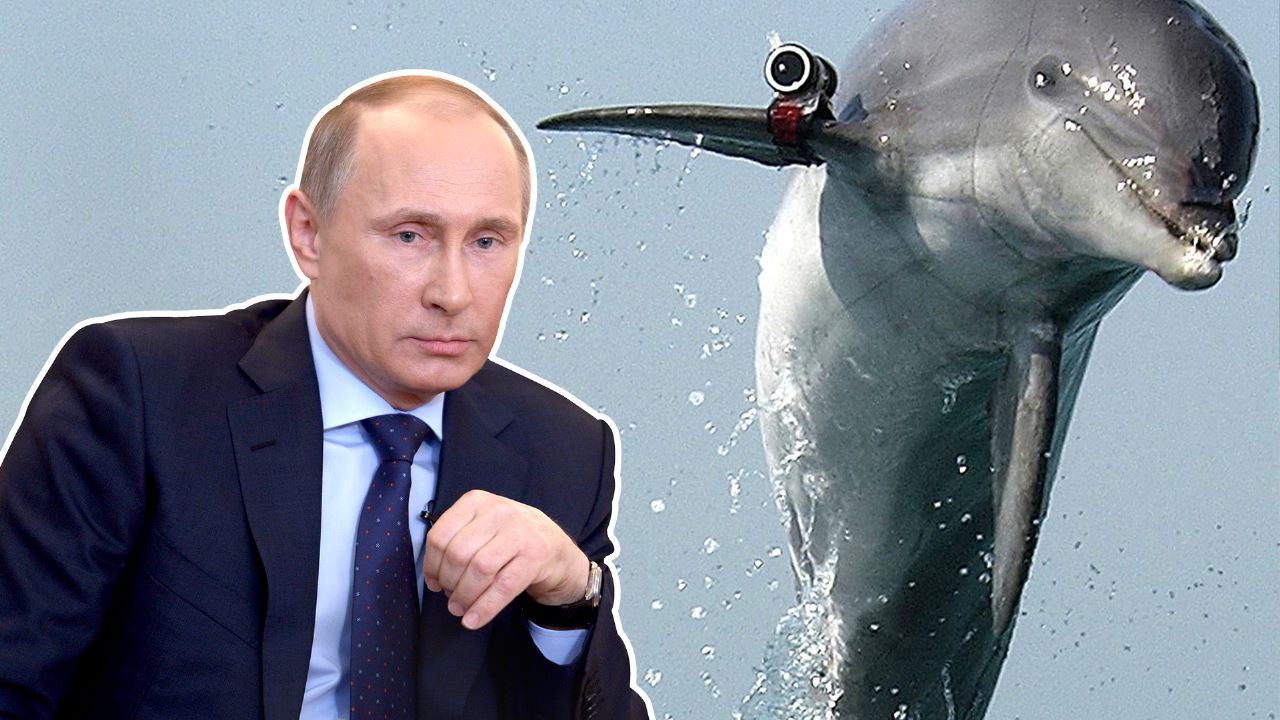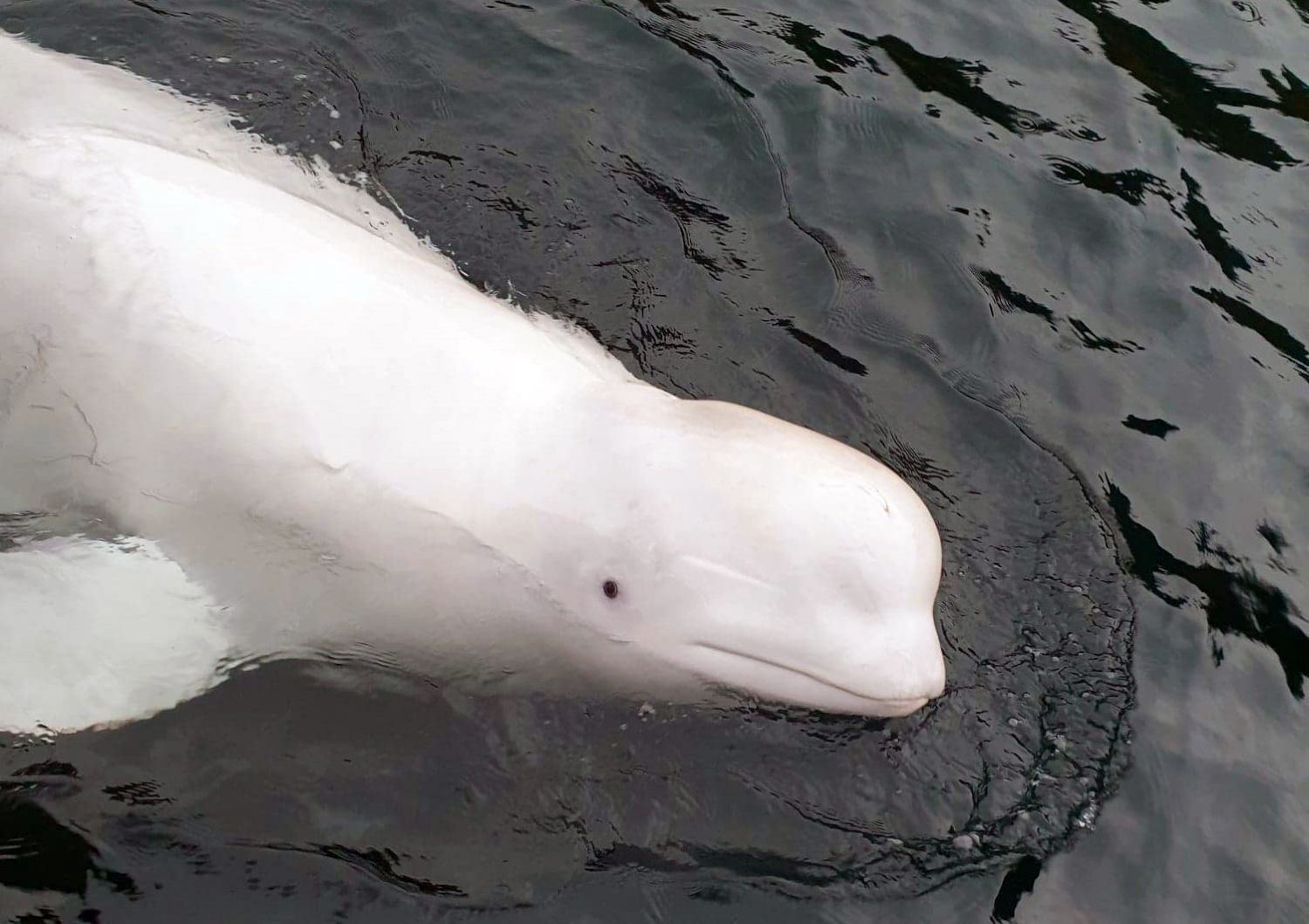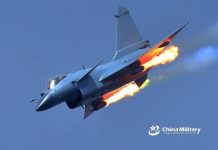The quest for warm water ports triggered the Russian annexation of Crimea in 2014, But to keep it operational and its Black Sea Fleet safe is a different ball game altogether.
MUST READ: Worryingly Short On S-400 & 4.5-Gen Fighters, India’s Acquisition Of MQ-9B Drones Surreal Disconnect From Reality
The threat of Ukrainian drones hitting the Sevastopol harbor base, where most of Russia’s Black Sea Fleet docks, is looming large. Given the previous attempted attacks by Ukrainian undersea drones, the Russian Navy has pulled back its warships and is making the base impregnable.
Guarding its naval assets are its missile systems, maritime drones, and its trained marine mammals – its military dolphins trained to counter Ukrainian special forces divers seeking to infiltrate the base and sabotage Russian naval warships docked there.
While the dolphin pens were moved to the entrance of the Sevastopol harbor around the same time Russia launched an attack against Ukraine, it has doubled the number of dolphins around the base since the April drone attack.
Experts put the number of dolphins patrolling the Sevastopol harbor at around 6-7.
After the dissolution of the Soviet Union, a 1997 treaty with Ukraine allowed Russia to keep the Black Sea Fleet intact, and the lease of the base was extended to 2042. Before the expiry of the lease, Russia annexed Crimea and gained full control of Sevastopol.
Dolphins are known for their speed, agility, and intelligence. Andrew Lambert, a professor of naval history at King’s College London, told the EurAsian Times: “The dolphin is a top predator and very clever.” The biggest advantage that the dolphins have is that they can outswim even the fastest human swimmers. These marine mammals are highly trainable and can dive down and come back to the surface without any decompression sickness that human divers feel.
Their natural sonars beat any of the latest technology available, and they can easily locate undersea mines. They can assist security personnel in detecting and apprehending unauthorized swimmers and divers that might attempt to harm the Navy’s people, vessels, or harbor facilities.
Being intelligent mammals, they can make excellent patrol animals. Prof. Lambert, however, said that he did not “expect” any undersea attack by the Ukrainians.

The Sevastopol port is an important target for the Ukrainians as Russia launches most of its Kalibr cruise missiles from the Black Sea waters off the Crimean Peninsula. Also, the port is the Russian Navy’s gateway to the Black Sea and the Mediterranean Sea.
Dolphins are not the sole defense of the Sevastopol Harbour; instead, they are part of a multi-layer defense. Ships, helicopters, fast boats, and guards also monitor the surface and underwater threats. The harbor entrance is also blocked by layers of nets and floating barriers.
A Planet Labs image dated November 9, 2022, shows the Projects 1239 and 1241 warships that launched the cruise missiles docked near Holland Bay. These ships go out for a short distance in the Black Sea and launch their missiles from there. This is done so the missiles hit one of Sevastopol’s Mountain slopes.
The missiles from the warship have been constantly targeting population centers in Ukraine. Last year on December 5, Ukrainian President Volodymyr Zelensky vowed that his troops would ensure that those missiles “can only be at the bottom” of the sea.
Special Operations Dolphin
Russia isn’t alone when it comes to training aquatic animals for military purposes. The Reconnaissance and Interdiction Division manages the US Navy’s Marine Mammal Program, which trains bottlenose dolphins and California sea lions to detect, locate, mark, and recover objects in harbors, coastal areas, and at depth in the open sea.
The US Navy established its Naval Marine Mammals Program in 1959 as teammates for its sailors and marines to help them guard against threats underwater. One of the earliest uses of trained dolphins was by the US during the Vietnam War.
According to an MIT article, the US Navy dolphins Garth, John, Slan, Tinker, and Toad were stationed in Cam Ranh Bay, a deep-water bay, and were trained to prevent enemy swimmers from attacking an ammunition pier.
Most recently, in 2003, the US Navy flew nine of its dolphins to help with demining in Umm Qasr, an Iraqi port on the Persian Gulf.
While aerial unmanned combat vehicles have been the major development in modern warfare, sub-sea drones are yet to catch up. Dolphins provide the natural advantage of hundreds of years of evolution.
According to the US Navy’s Marine Mammals Program, “Dolphins naturally possess the most sophisticated sonar known to science. Mines and other potentially dangerous objects on the ocean floor that are difficult to detect with electronic sonar, especially in coastal shallows or cluttered harbors, are easily found by the dolphins.”
As part of its evolution, dolphins have evolved to avoid predators and locate food through extraordinary “echolocation” abilities. While assessing their underwater environments, they make loud broad-spectrum burst pulses that sound, to humans, like clicks.
“By listening to the echoes of those clicks, dolphins can detect a three-inch (eight-centimeter) ball from 584 feet—roughly speaking, that’s a tennis ball two football fields away—and distinguish between air gun pellets and corn kernels from 50 feet,” the MIT article explains.
“They can discern such fine differences even in cacophonous harbors, where man-made sonar has trouble distinguishing between returning echoes and the ambient sounds of boats, waves lapping the shore, and other noises,” it says.
Dolphins and sea lions have “excellent low light vision” and “underwater directional hearing, “allowing them to detect and track undersea targets, even in dark or murky waters. They can dive hundreds of feet below the surface without risking decompression sickness or “the bends” like human divers.
“Someday it may be possible to complete these missions with underwater drones, but for now, technology is no match for the animals,” says the Reconnaissance and Interdiction Division that looks after the training of the aquatic animals for the US Navy.
Most Powerful Sonars!
Russia Deploys ‘Military Dolphins’ To Keep An Eye Out For Ukrainian Saboteurs At SevastopolA rare footage of Putin’s Spy Whale ‘HVALDIMIR’ spotted with a camera harness, allegedly trained by Russian Navy for Intelligence Ops.#Hvaldimir #Whale… pic.twitter.com/lBPFzFI5VT
— EurAsian Times (@THEEURASIATIMES) June 16, 2023
‘Hvaldimir’ – The Russian-Trained Spy Whale
A beluga whale grabbed the world’s attention when it was spotted near the Norwegian coast in 2019. It was suspected to be a trained Russian spy that had swum far away from the Russian shores.

It was named Hvaldimir – a combination of the Norwegian word for whale (hval) and Russian President Vladimir Putin’s first name. He had been seen wearing a harness labeled “Equipment St. Petersburg,” sparking reports that Hvaldimir is trained by the Russian Navy for intelligence purposes.
It was recently sighted near Sweden, and there were concerns about its well-being. Efforts have also been taken to protect him from water traffic. Since fleeing captivity, Hvaldimir has won hearts as his video of retrieving a woman’s dropped cell phone went viral.
The Soviet Navy ran the aquatic animal training program during the Cold War, but it was passed on to Ukraine after the USSR’s disintegration. Russia revived and expanded the program again after the annexation of Crimea in 2014.
- Ritu Sharma has written on defense and foreign affairs for over a decade. She holds a Master’s Degree in Conflict Studies and Management of Peace from the University of Erfurt, Germany. Her areas of interest include Asia-Pacific, the South China Sea, and Aviation history.
- She can be reached at ritu.sharma (at) mail.com




